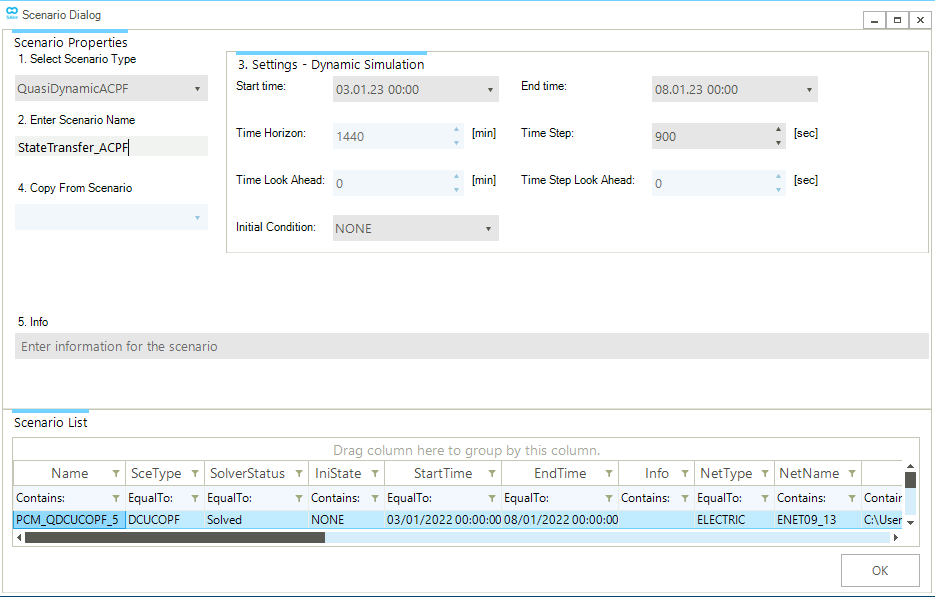State transfer from a DCUCOPF to a QuasiDynamicACPF scenario
Different types of scenarios are used for different purposes; some are used to minimize the production cost of the generation fleet, while others are used to understand the technical limitations of the network. In SAInt, the State Transfer feature can export events and profiles from one scenario type to be used as inputs for another.
This guide shows how to transfer the commitment of the generation fleet and the dispatch of both generation and demand units from a DCUCOPF scenario to a ACPF scenario. In order to evaluate the technical limitations of the network (such as current line loading and network congestion levels).
|
1. Export the events and profiles from a DCUCOPF scenario
Once the DCUCOPF scenario is solved. The commitment and dispatch events and profiles can be exported. Under the option select the Commitment Events (ON/OFF) option to export all the generation units ON and OFF events, as shown in Figure 1. Save the export file and define the time window of the exported events. Repeat the same process to export the Dispatch and Demand Events (PSET) events and profiles.

2. Transfer to a QuasiDynamicACPF scenario
|
Before creating a QuasiDynamicACPF scenario, ensure all relevant network and object parameters and properties have been included in the model to ensure the simulations correctly represent the network’s behavior and limitations. |
Create a new scenario as shown in Figure 2. Select the desired time window. In some cases, the time window of ACPF scenario can be a segment of the original DCUCOPF scenario to analyze the network under extreme conditions. Once the scenario is created, include and import the profile and event files. Review the profiles and events and run the ACPF simulation to analyze the network.
